
- 2018 LEAF EV features all-new design and improved driving range1
- Starting price2 announced at $29,990 – $690 below current 2017 LEAF starting MSRP
- New aerodynamic exterior design follows Nissan’s signature design language; roomy “cool tech” interior offers advanced telematics systems
- Advanced Nissan Intelligent Mobility technology includes ProPILOT™ Assist, e-Pedal and Safety Shield technologies
- U.S. on-sale date set for early 2018, available at launch in all 50 states
LAS VEGAS – As the global leader in electric vehicle sales, Nissan today continues its pursuit toward a clean-energy future with the reveal of the all-new Nissan LEAF. José Muñoz, Chief Performance Officer, Nissan Motor Co., Ltd. and Chairman, Nissan North America, Inc., unveiled the 2018 Nissan LEAF at a media event at Las Vegas’ Thomas & Mack Center. The debut immediately followed the LEAF’s global launch in Tokyo, Japan. The next-generation of LEAF, the world’s best-selling affordable, mass-production electric vehicle, goes on sale at Nissan dealers in all 50 states in early 2018.
“When we launched LEAF in 2010, it instantly became the most affordable, mass market EV in the world. We are not walking away from that proposition,” said Muñoz. “The value equation for the new LEAF is even stronger than ever before – beginning with a starting MSRP1 under $30,000. That’s a lower price than the LEAF in market today and it includes more power, range and technology, all wrapped in a beautiful new exterior and interior design.”
The new 2018 LEAF features a 150-mile driving range, aerodynamic exterior, roomy high tech interior and advanced technologies including ProPILOT™ Assist and e-Pedal. It is the first step in the re-launch of Nissan’s EV platform and will be followed in model year 2019 with a high-power version with increased motor power and battery capacity.
“This new LEAF is not just the latest symbol of Nissan’s global leadership in the EV segment, it is the culmination of everything we’ve learned from more than two billion miles of real life, on-road driving and from the feedback of hundreds of thousands of owners around the world, particularly LEAF customers here in the U.S.,” added Muñoz.
To date, Nissan has sold over 112,000 LEAF EVs in the United States and more than 283,000 globally.
The new LEAF is also the embodiment of Nissan Intelligent Mobility, a global initiative that focuses on how Nissan vehicles are driven, powered and integrated into society. Its new ProPILOT Assist (Nissan’s advanced single lane driver assistance technology), helps ease driver workload by reducing the amount of driver acceleration, steering and braking input under certain driving conditions. While it is a “hands-on” system, it previews Nissan’s ongoing development of future leading edge autonomous drive technologies.
The LEAF’s revolutionary e-Pedal technology transforms the driving experience. It lets drivers start, accelerate, decelerate and stop by increasing or decreasing the pressure applied to the accelerator. When the accelerator is fully released, regenerative and friction brakes are applied automatically, bringing the LEAF to a complete stop. The car holds its position, even on uphill slopes, until the accelerator is pressed again. The reactiveness of e-Pedal helps maximize driving pleasure.
“We believe the new LEAF will be another game changer for Nissan in the U.S., just as the redesigned Rogue has been in the last year and a half, hitting the ‘sweet spot’ in the growing EV segment,” said Muñoz. “It takes everything we’ve learned from our loyal first-generation LEAF owners to the next level.”
The new-generation Nissan LEAF will begin making its first public appearances next week at National Drive Electric Weekevents in eight U.S. cities. Nissan LEAF is the official sponsor of National Drive Electric Week for the third straight year.
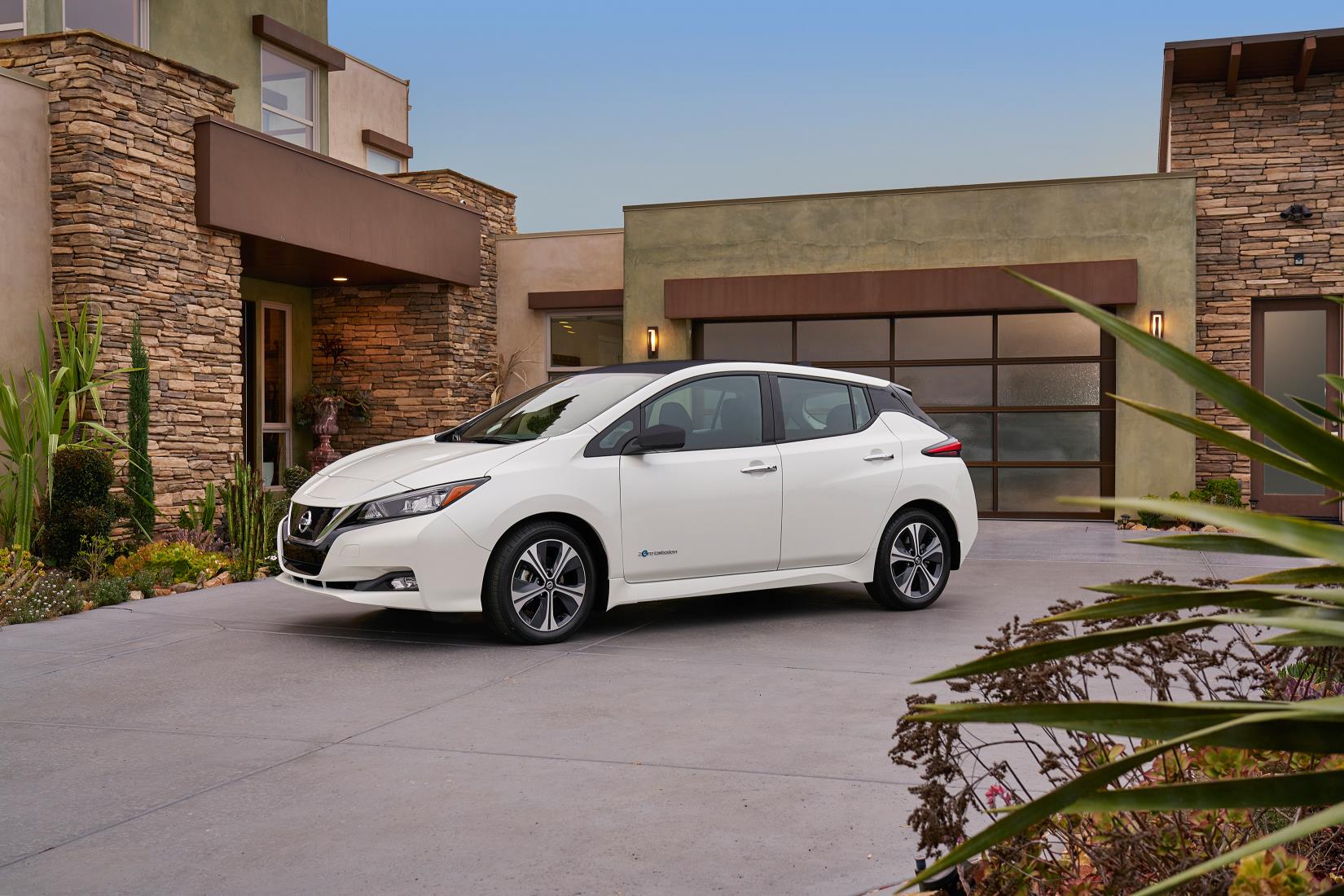
Overview: 2018 Nissan LEAF
- Greater range and advanced technologies make new LEAF the ultimate electric vehicle
- 2018 LEAF offers a longer range at a lower price – with stronger performance, striking new design and cutting-edge technologies
- Since its launch in 2010, LEAF has been the #1 affordable, mass production EV in the world
- LEAF’s advanced ProPILOT™ Assist and e-Pedal technologies offer a look into the future of Nissan Intelligent Mobility
LAS VEGAS – The all-new Nissan LEAF sets a new standard in the growing market for mainstream electric vehicles by offering customers greater range, advanced technologies and a dynamic new design.
Drivers will feel more confident, excited and connected thanks to the new Nissan LEAF’s ProPILOT™ Assist driver assistance technology, e-Pedal, increased power and range, and improved refinement, comfort and convenience.
The new, zero-emission Nissan LEAF embodies Nissan Intelligent Mobility, the company’s approach to changing the way cars are driven, powered and integrated into society. The three key aspects of Nissan Intelligent Mobility exemplified by the new Nissan LEAF are Nissan Intelligent Driving, Nissan Intelligent Power and Nissan Intelligent Integration.
Nissan Intelligent Driving
Headlining the new LEAF’s Nissan Intelligent Driving technology are ProPILOT™ Assist, e-Pedal and the company’s heralded Nissan Safety Shield. ProPILOT Assist is a single-lane driving assistance technology. Once activated, it can automatically control the distance to the vehicle in front, using a speed preset by the driver (between 20 mph and 90 mph).
It can also help the driver steer and keep the vehicle centered in its lane. If the car in front stops, the ProPILOT Assist system will automatically apply the brakes to bring the vehicle to a full stop if necessary. After coming to a full stop, the vehicle can remain in place even if the driver’s foot is off the brake. If traffic restarts, the car will resume driving when the driver touches the switch again or lightly presses the accelerator to activate ProPILOT. All these functions can significantly reduce stress when driving on the highway in both heavy and flowing traffic.
Another innovation that enhances the LEAF’s driving experience is the e-Pedal, which is offered as standard equipment on all grade levels. It allows the driver the simplicity of accelerating, decelerating and stopping the car by using the accelerator pedal alone — a revolutionary innovation that can change the way people drive.
By simply releasing the accelerator, the LEAF will come to a smooth and complete stop without the need to press the brake pedal. With a deceleration rate of up to 0.2g, the e-Pedal eliminates the need for drivers to constantly move their foot from the accelerator to the brake pedal to slow down or stop. This helps reduce fatigue and increase enjoyment.
Studies by Nissan in Japan, Europe and the U.S. have shown that the LEAF’s e-Pedal reduces the number of times the driver must apply the brakes while commuting in heavily congested traffic. While the conventional brake pedal must still be used in aggressive braking situations, the e-Pedal lets drivers use a single pedal for more than 90 percent of their driving needs.
Along with ProPILOT Assist and e-Pedal, the new LEAF is equipped with a set of advanced safety technologies including Intelligent Lane Intervention, Lane Departure Warning, Intelligent Emergency Braking, Blind Spot Warning, Rear Cross Traffic Alert and Intelligent Around View Monitor with moving object detection.
Nissan Intelligent Power
The focal point of Nissan Intelligent Power in the new LEAF is the e-powertrain, which offers improved energy efficiency and increased torque and power output. The new e-powertrain delivers an exhilarating, linear driving performance with a power output of 147 horsepower, 38 percent more than the previous-generation LEAF. Torque has been increased 26 percent to 236 lb-ft, resulting in improved acceleration.
Existing LEAF drivers already enjoy the instant response and linearity of performance as they navigate the city. The new LEAF’s improved acceleration will boost enjoyment even further. Even with the additional power output, the new LEAF’s driving range has been increased. The car’s new lithium-ion battery pack delivers an estimated range of 150 miles1, which should satisfy the daily driving needs of the majority of LEAF owners.
The new battery design adds energy-storage capacity without increasing the size. The battery pack occupies the exact same dimensions as that of the previous-generation LEAF. The individual cell structure of the laminated lithium-ion battery cells has been improved, representing a 67 percent increase in energy density versus the original 2010 LEAF model.
Another key engineering improvement for the lithium-ion battery pack is the use of enhanced electrode materials with revised chemistry, resulting in higher power density while contributing to greater battery durability upon charge and discharge.
For those who want more excitement and performance, Nissan will also offer a new higher power, longer range version at a higher price for the 2019 model year.
Nissan Intelligent Integration
The new LEAF links drivers, vehicles and communities through the user-friendly NissanConnectSM feature and systems that share power between electric vehicles and homes, buildings and power grids.
Using vehicle-to-home systems, the battery makes it possible to store surplus solar power during the daytime and then use it to help power the home in the evening. The customer can also recharge the battery in the middle of the night, when prices are lowest in some markets, and then use the electricity during the day to reduce energy costs.
In some countries with V2G (vehicle-to-grid) systems, LEAF owners can get incentives from energy companies to improve power grid stability by absorbing demand fluctuation. The system is not offered in the United States at this time.
A newly designed interface on the Nissan LEAF smartphone app allows users to monitor the vehicle’s state of charge, schedule charging to benefit from optimal energy tariffs, find the nearest charging station, and pre-heat or cool the car before getting in.
Chassis and body
In performance and agility, the new LEAF excels. To match the improved output of the electric motor and inverter, Nissan engineers enhanced the car’s chassis for better stability. Heavy components, including the battery, are placed in the center of the body, helping achieve smaller yaw moments of inertia compared with front-engine vehicles and thereby improving directional stability, enabling smoother cornering.
The new LEAF’s electric power steering system has a more linear feel that enhances confidence, especially on highways, with enhanced feedback from the road surface. This is thanks to a software upgrade, new control logic working in conjunction with the steering angle sensor, and a 10 percent increase in steering torsion bar stiffness. Additionally, the urethane bump stop for the rear suspension has been replaced by a rubber stop to reduce shocks and bumpiness when driving on uneven roads.
The new LEAF also comes with Intelligent Ride Control for more precise electric motor torque control generation when cornering, reducing vibration while simultaneously improving ride quality and steering control.

Exterior design: sleek silhouette and “cool tech attitude”
The new LEAF’s design expresses Nissan’s forward-thinking attitude and its pioneering approach to replacing the world’s best-selling electric vehicle. It is inspired by the IDS Concept car, first shown at the 2015 Tokyo Motor Show.
The sporty, eye-catching body represents the car’s dynamic personality. The philosophy behind the exterior design was to express clean and simple lines and a robust and sleek silhouette, creating the feeling of a high-tech device. The horizontal character line, the bumper, and the striking highlights in the lower part of the body emphasize the lower center of gravity, giving the beholder an instinctive feeling that it’s agile and fun to drive.
The signature V-Motion grille, the boomerang light signature and the floating roof emphasize the presence of Nissan brand design, giving the LEAF an appearance similar to other Nissan models, such as the popular Rogue.
A clear-blue 3D mesh pattern with a “freezing” motif, on a flush surface inside the V-Motion grille, expresses the LEAF’s uniqueness as an EV. The new LEAF’s projector-beam headlights with dual, direct-lens low and high beams are a first for Nissan. More mechanical details and a floating signature configuration express a high-tech feel, while visibility and safety are improved by enhancing forward illumination coverage, optimally balancing design and functionality.
The rear combination lamps feature a unique signature that’s easily recognizable from a distance. A spoiler integrated in the window graphics gives the new LEAF an impressive, sporty look. The low hood blends flawlessly into the windshield and floating roof, creating a sleek silhouette that makes air flow.
The underfloor and a diffuser-type rear bumper combine to achieve reduced drag and zero lift, resulting in improved vehicle stability. Thanks to the aerodynamic body styling, including a rear bumper with a clear-cut curve and aero-design wheels, the new Nissan LEAF has a 0.28 coefficient of drag.
The angle of the charging port at the front has been reconfigured for greater convenience, letting the customer connect the charging cable without bending down. Ergonomic testing by Nissan shows that this new 45-degree angle allows drivers of all heights to easily and comfortably connect the charger.
Interior design: premium ambience with a clean, relaxed, high-tech feeling
The new LEAF’s cabin features roominess and openness with the brand’s “Gliding Wing” design language used as a framework. The redesigned driver information display has a simple, light configuration without excessive decoration. It focuses on visibility, creating a tasteful, understated look and feel with both excellent spaciousness and functionality.
Customers will immediately appreciate the signature vibrant blue stitching, an emblem of Nissan EVs, in the seats, door trim, armrest and steering wheel. The blue, illuminated vehicle start/stop button and shift knob finisher create a cool, high-tech feeling.
Through the thoughtful design of the center console and switchgear, the new LEAF gives drivers the information they need where they need it. This helps them focus on what really matters the most – an enjoyable drive. When the car is activated, a start-up movie is displayed, giving the driver a sense of excitement about driving an electric car.
Monitors and switches have also been redesigned for smart, stress-free operation. Most notable is the combination of an analog speedometer and a multi-information display. On the left side, the 7-inch, full-color, thin-film transistor (TFT) display shows a power gauge meter by default. The driver can smoothly change the information that is displayed.
The center display has a screen with a flush-surface design allowing the driver to easily operate audio and navigation systems and connect to smartphones intuitively with just a fingertip. The display shows the Safety Shield technology, the vehicle’s state-of-charge and a power gauge, as well as audio and navigation system information.
Apple CarPlay and Android Auto have been added to the infotainment system in cars equipped with the navigation system. The audio and navigation functions can be modified with a steering switch, without taking hands off the steering wheel.
Overall interior quality has also been enhanced. A matte chrome finish with a high-quality feel has been applied to the rim of the steering wheel, wrapped in genuine leather, and the center display, making for consistent brightness and quality of each metal finisher. Matte and glossy shades of black have been carefully applied in the air conditioner control panel and the vent grille, creating an advanced, precise interface and a comfortable cabin – like a high-quality living room with relaxing softness and warmth combined at their best.
Using NissanConnect, a key part of Nissan Intelligent Integration, the driver can search for continuously updated information such as the location and operating hours of free charging stations and charging station availability. Owners can also access their smartphone to check the car’s battery status.
The comfort and quietness of the new Nissan LEAF deliver a peerless ride. Even at highway speeds, the new Nissan LEAF’s cabin stays very quiet. Along with producing less drag, aerodynamic upgrades and exterior refinements have led to a reduction in wind noise.
Other noise-reduction measures include optimization of the redesigned inverter’s structural rigidity, and a noise-isolating cover on top of the PDM. The noise from the electric motor itself has also been reduced, even as it generates more torque and power than ever before.
The front console has been completely redesigned. The dual cup holders, in a tandem configuration, are now between the driver’s seat and front passenger seat. This allows for a new stowage area at the base of the center console – ideal for a smartphone or wallet – as well as an easily accessible power switch, a 12-volt power outlet and a USB port. This new and ergonomic center console design gives easier access to the controls and switchgear in the lower portion.
Energy-efficient air-conditioning and heating systems provide elevated comfort inside the cabin for all occupants. A smartphone app provides convenience features such as remote pre-conditioning of the vehicle’s interior temperature and wireless remote charging.
While the energy capacity of the lithium-ion battery pack has been significantly increased, the cabin’s interior dimensions remain essentially unchanged and comfortably accommodate five people. What’s more, the rear cargo area has been redesigned to provide increased luggage space, offering 23.6 cubic feet of available stowage. The square space, with bumps removed as much as possible, allows greater space utilization, increasing convenience and usability. The rear cargo space can now accommodate two large suitcases or three medium-sized, airline carry-on suitcases. It also allows for easier charging cable storage.
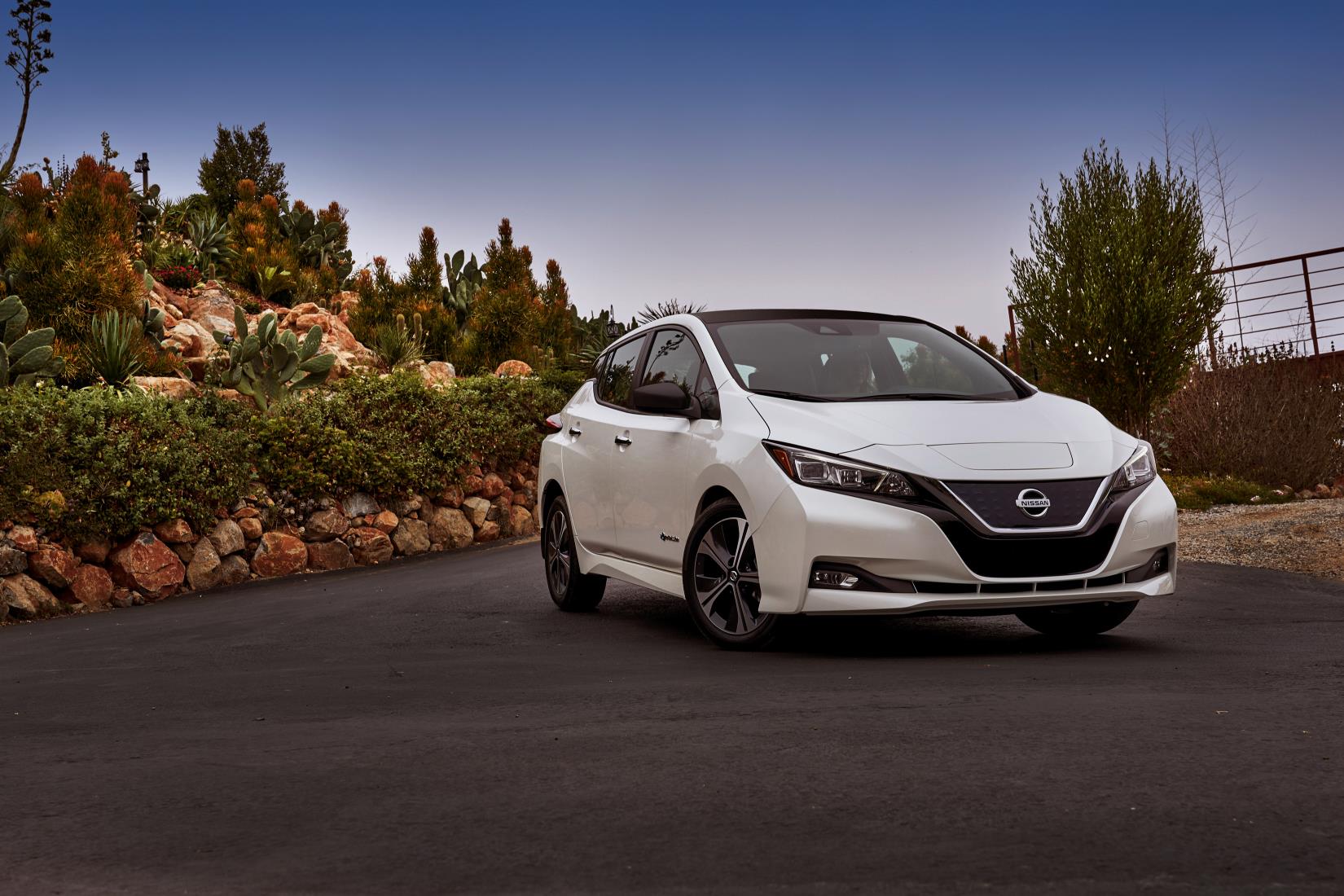

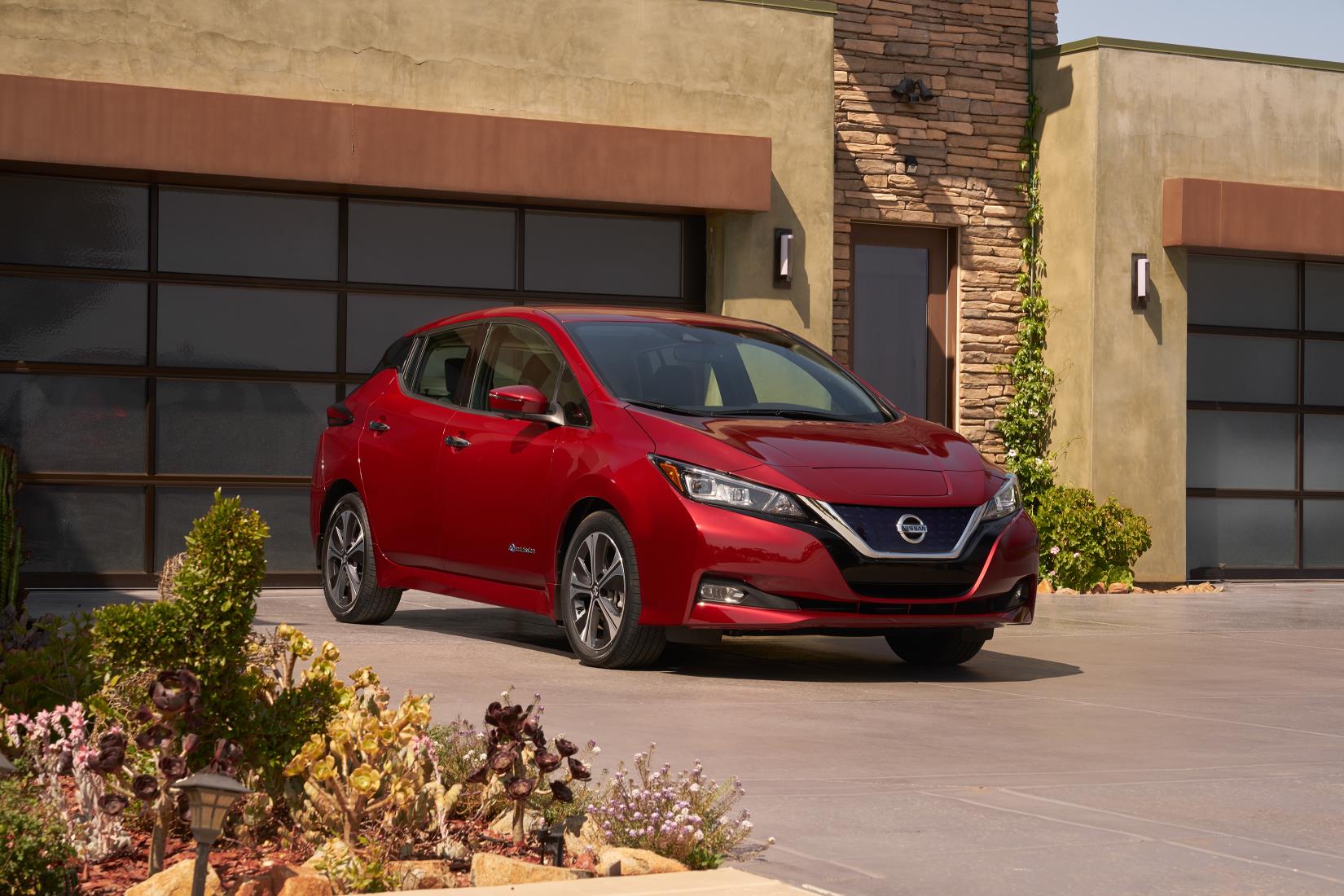
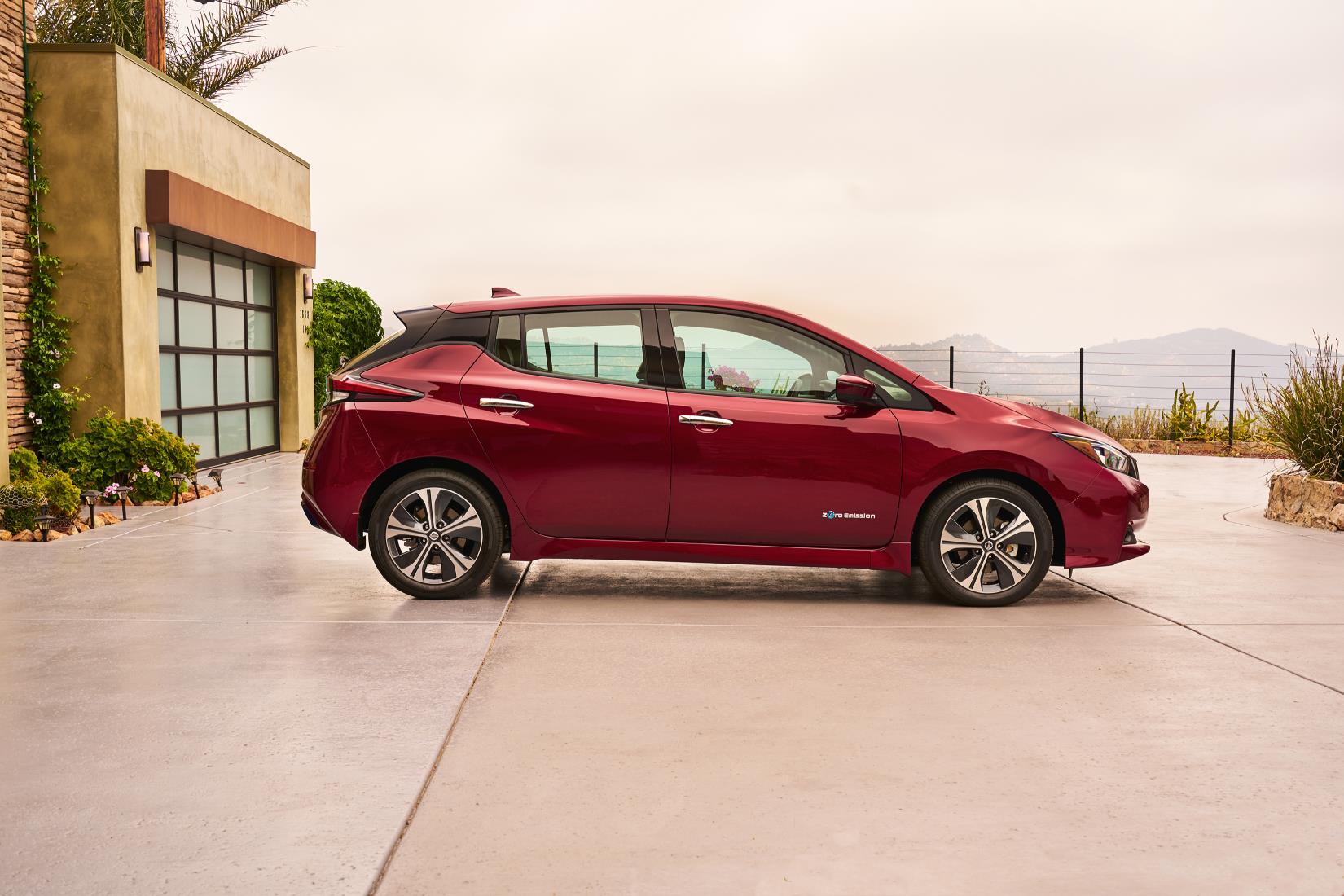

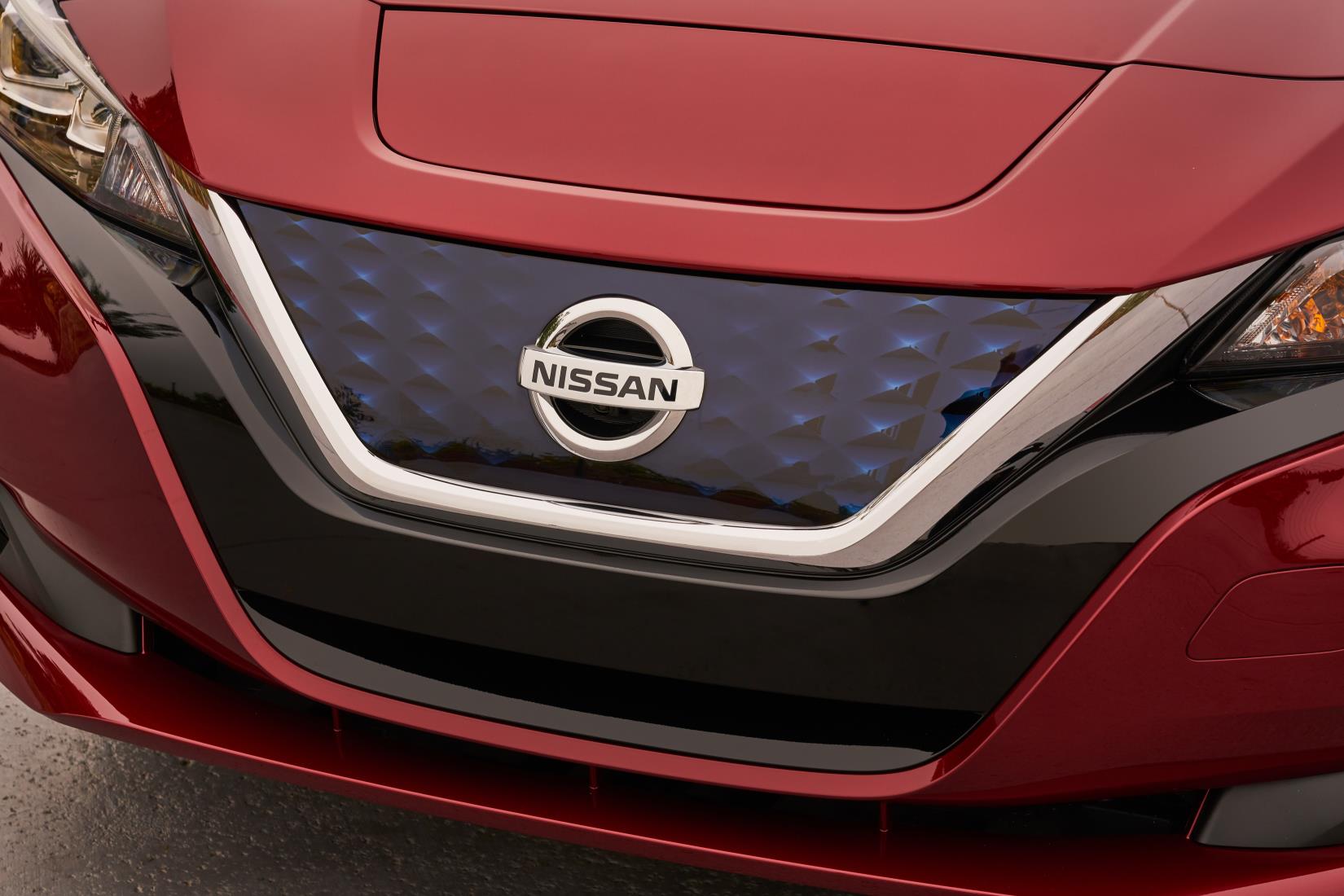
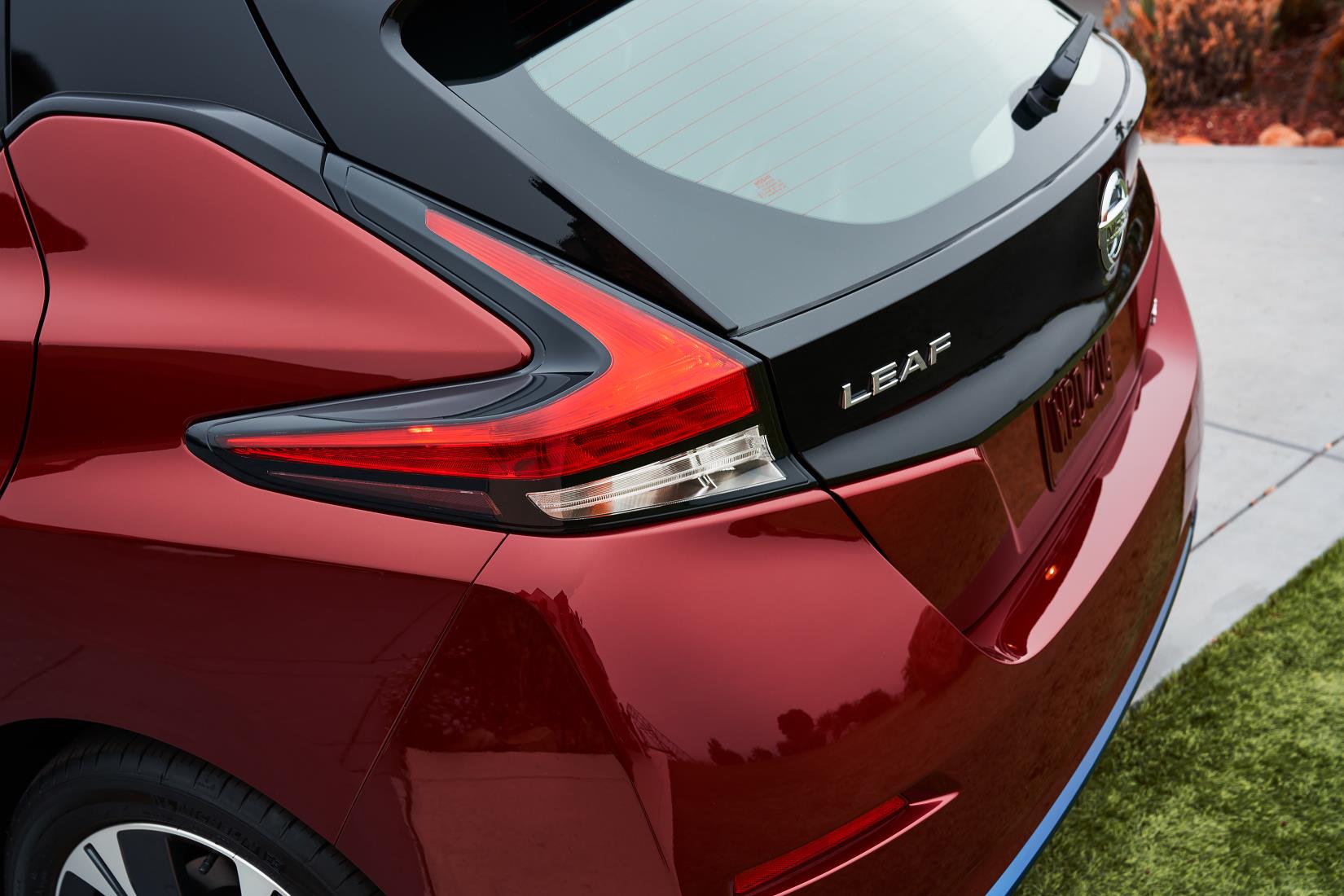
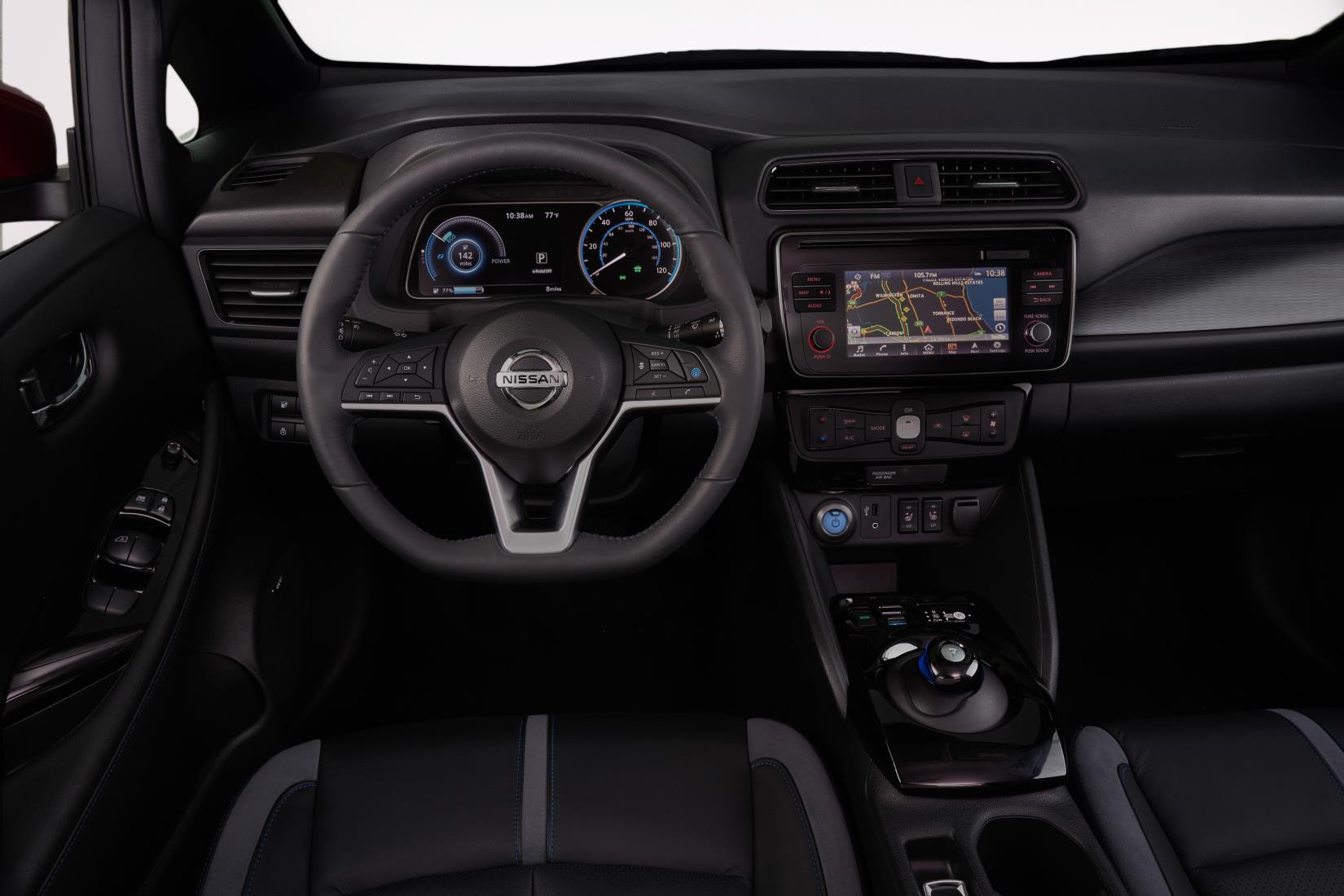

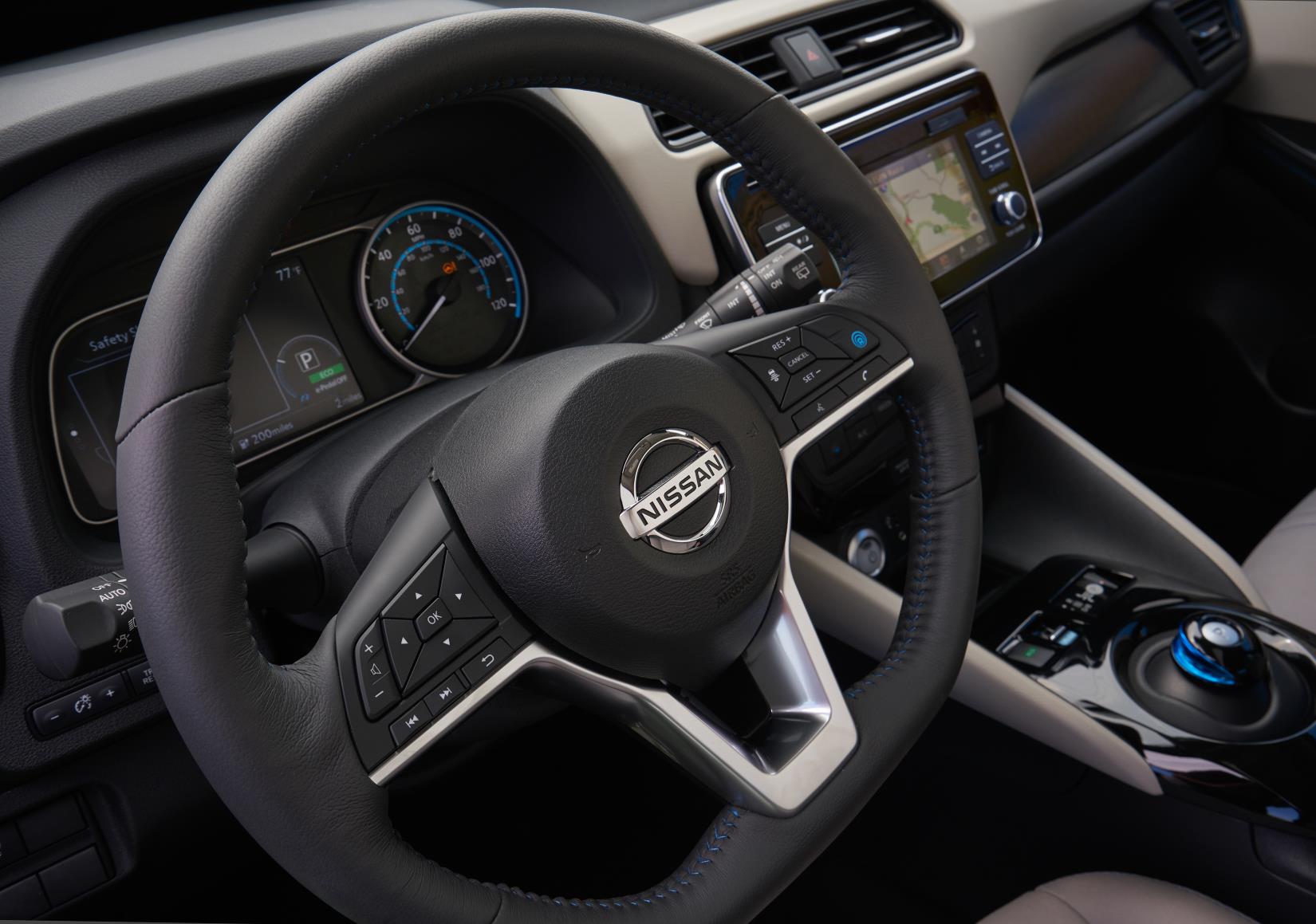
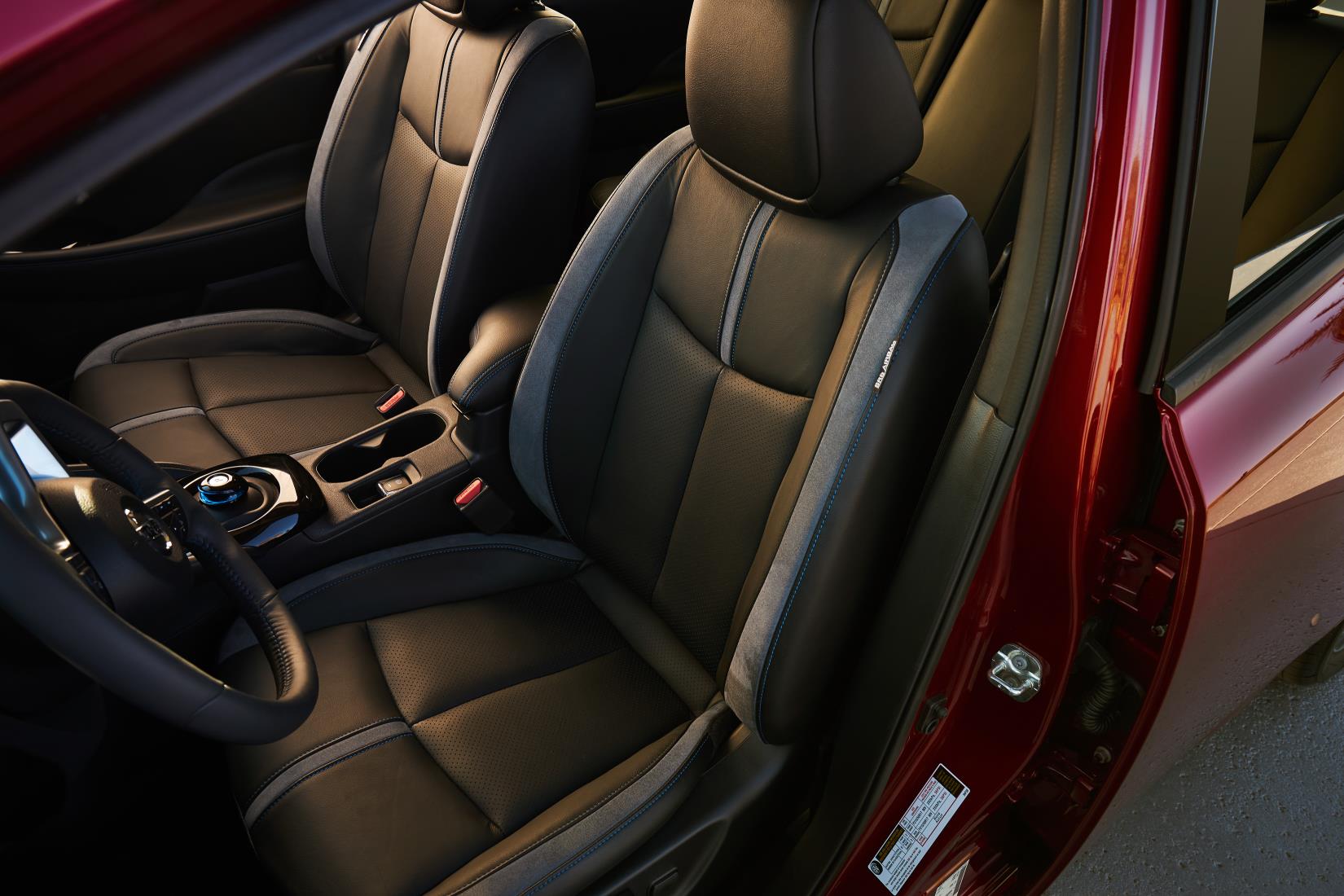
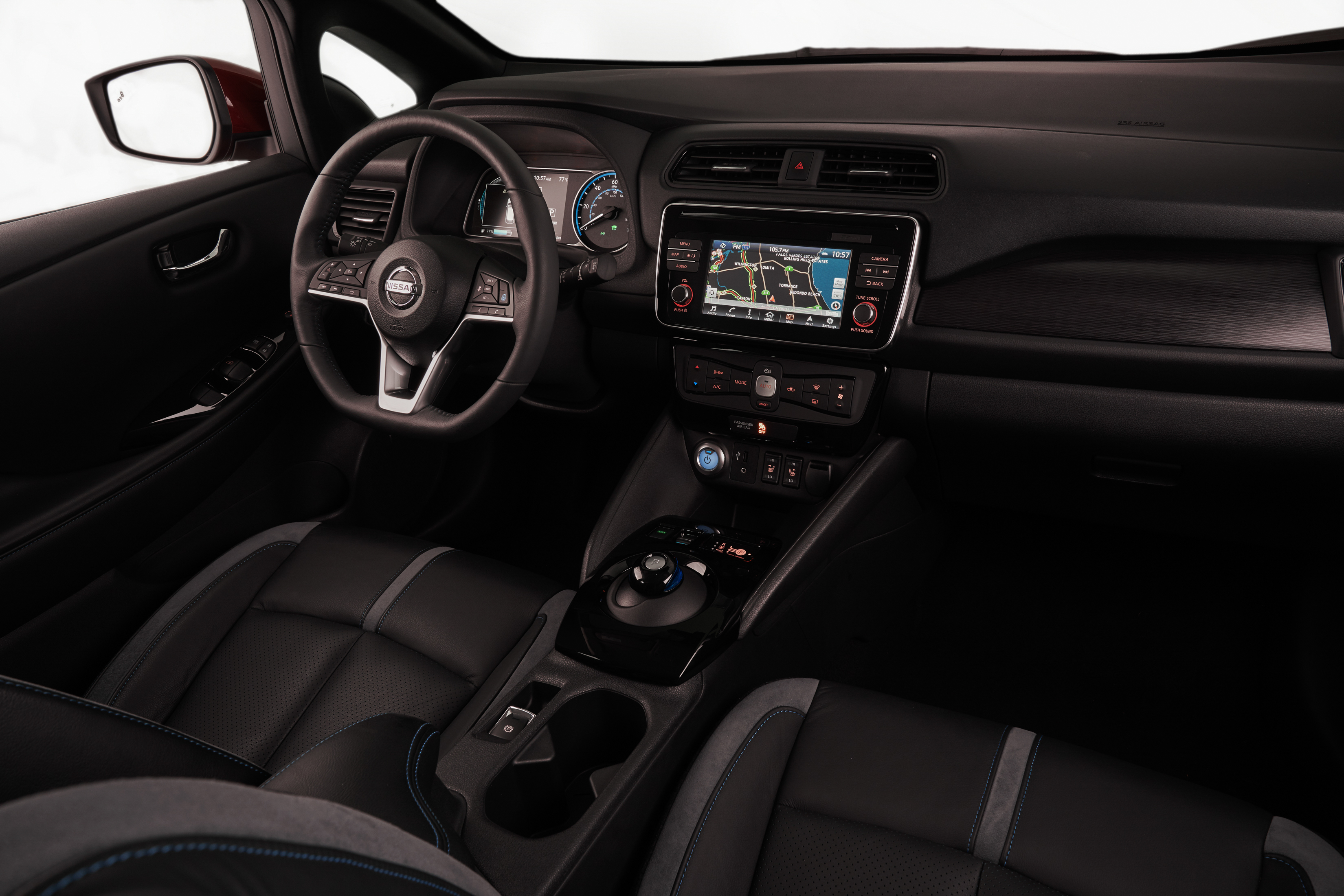
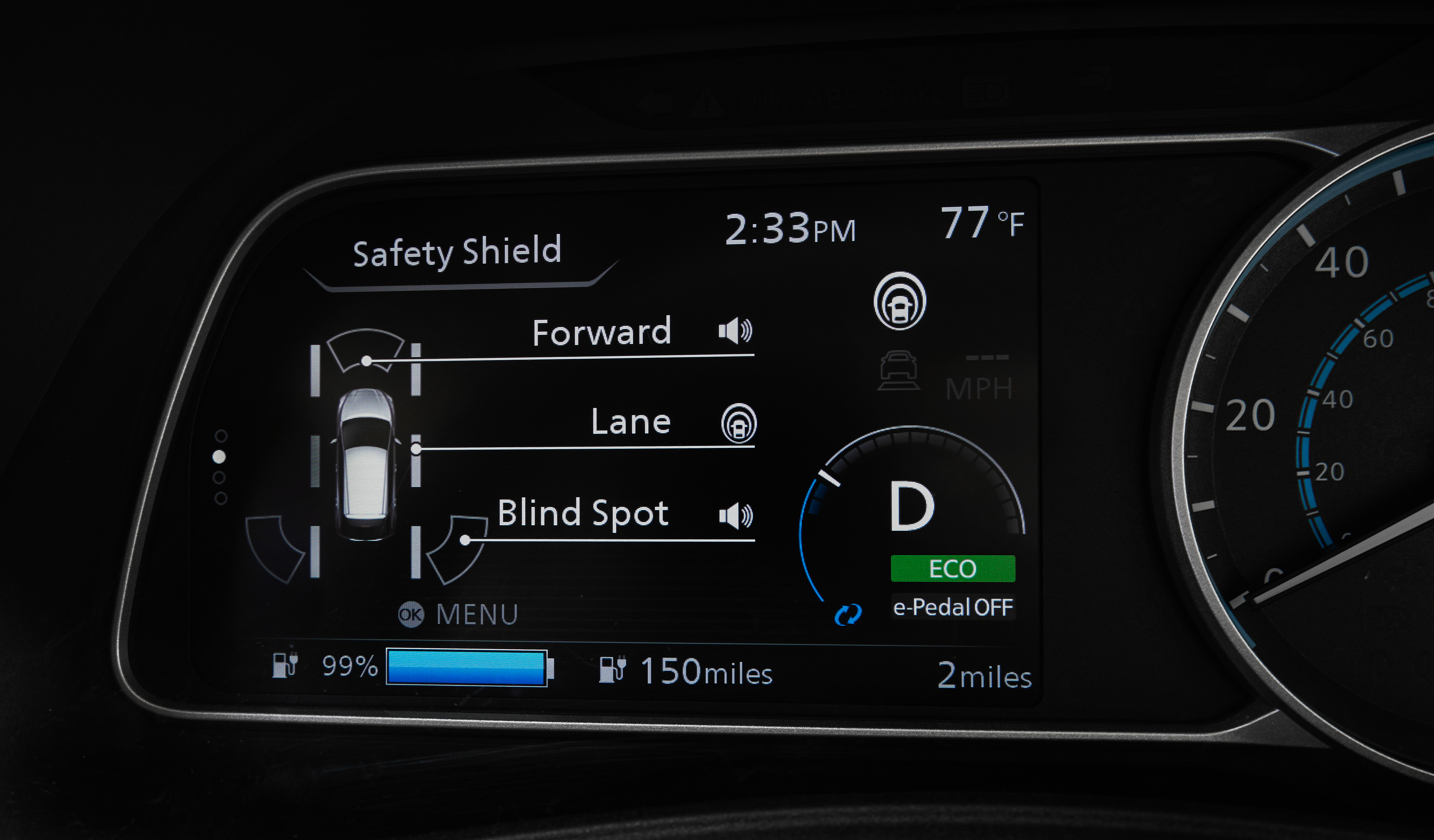
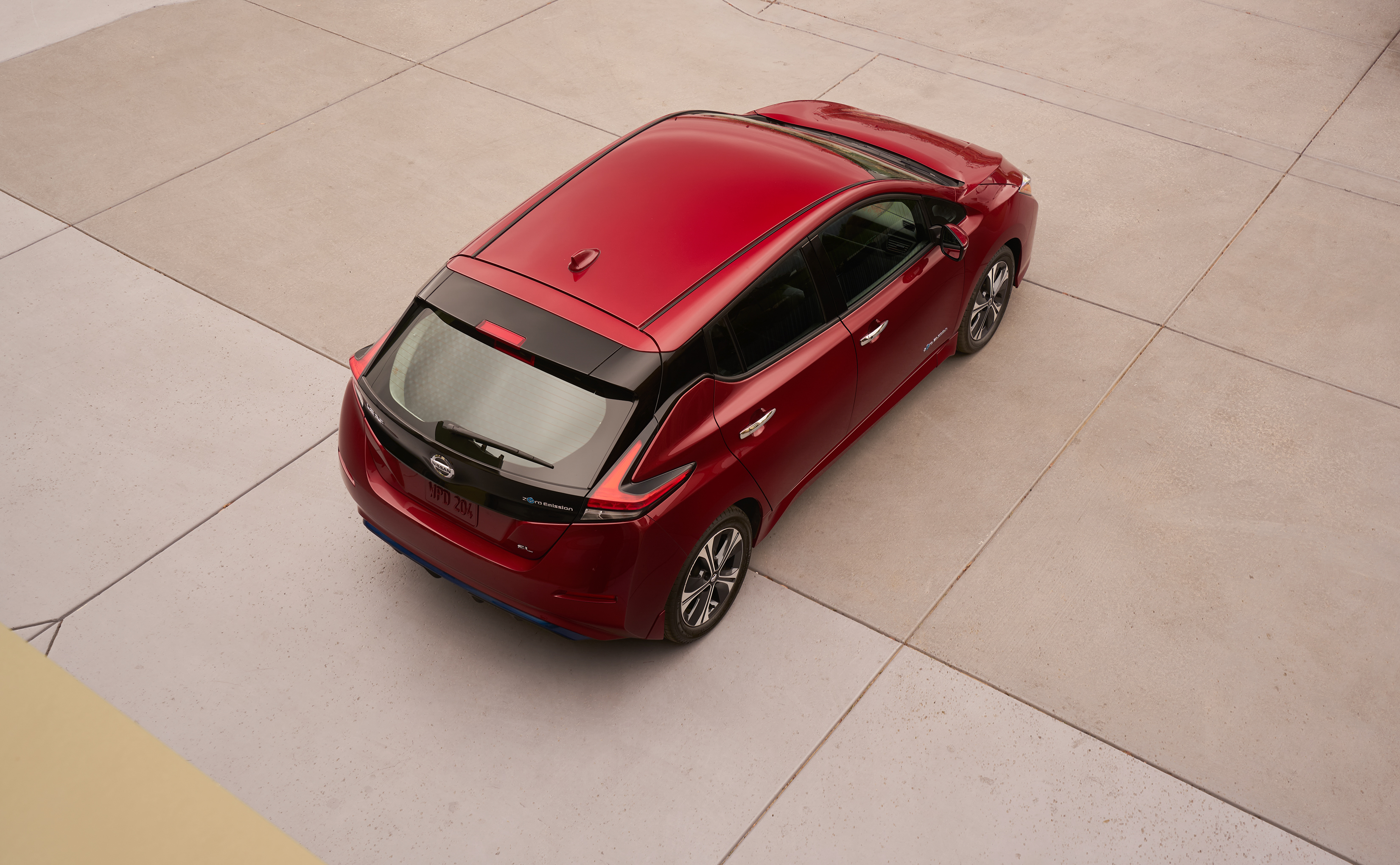
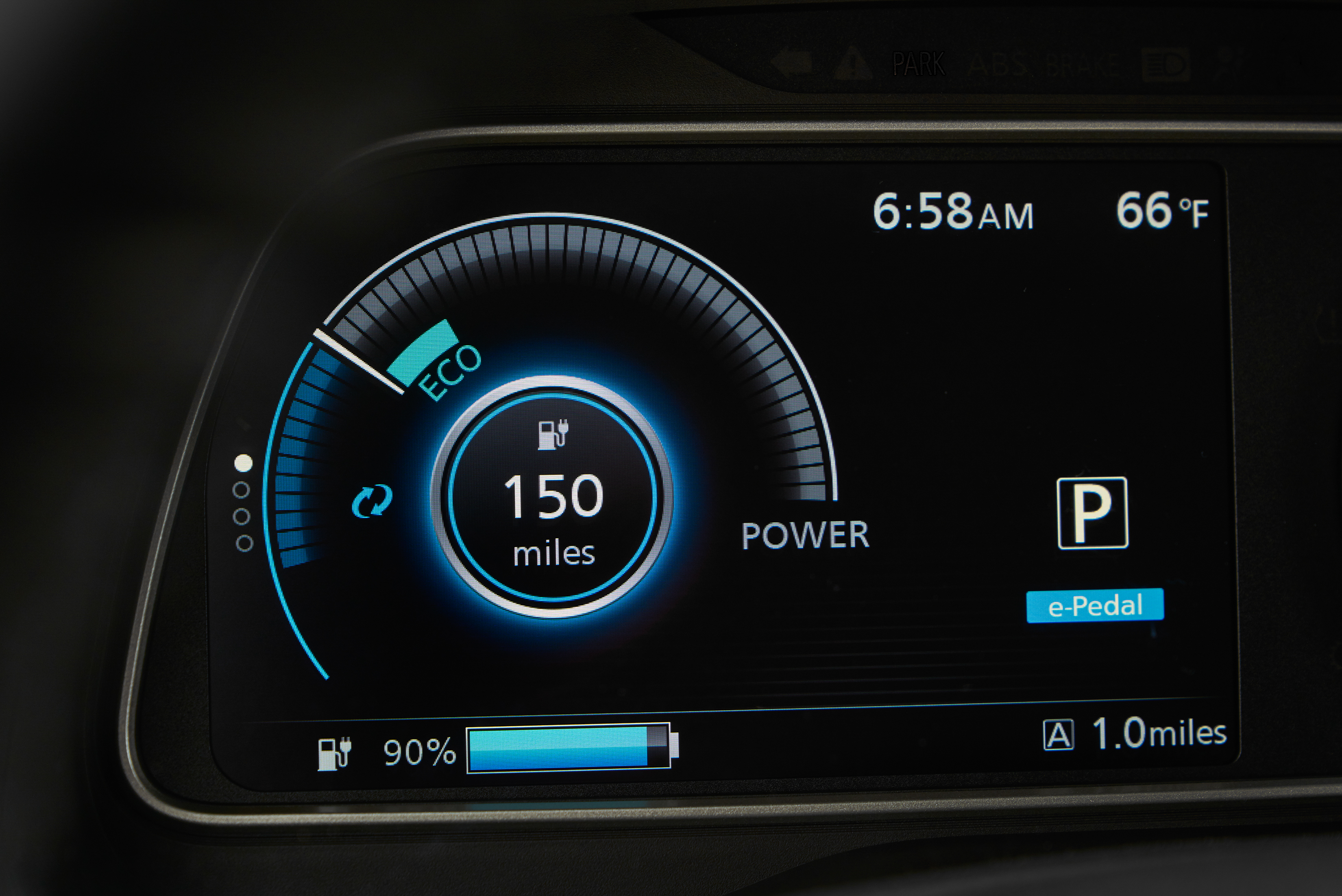

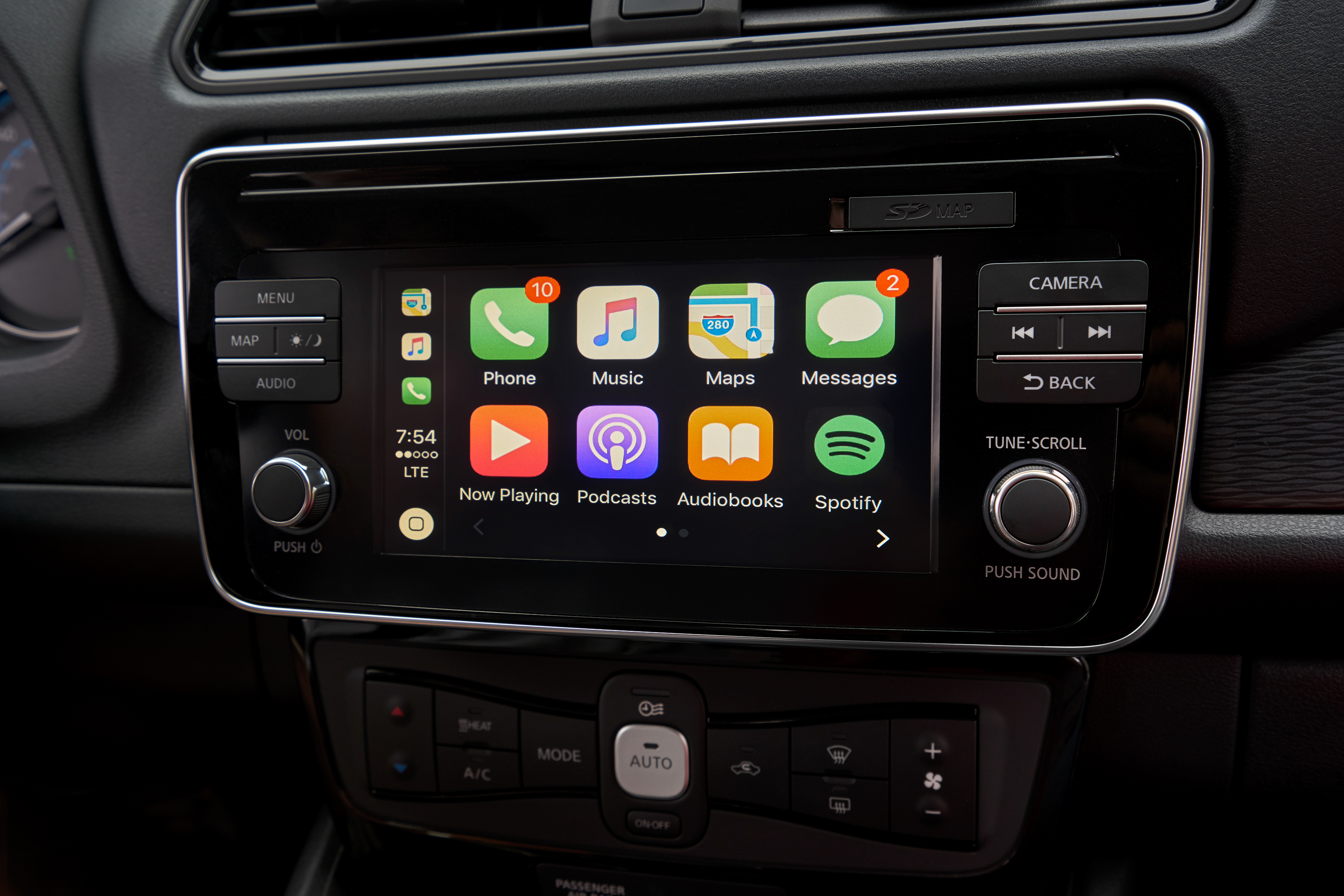
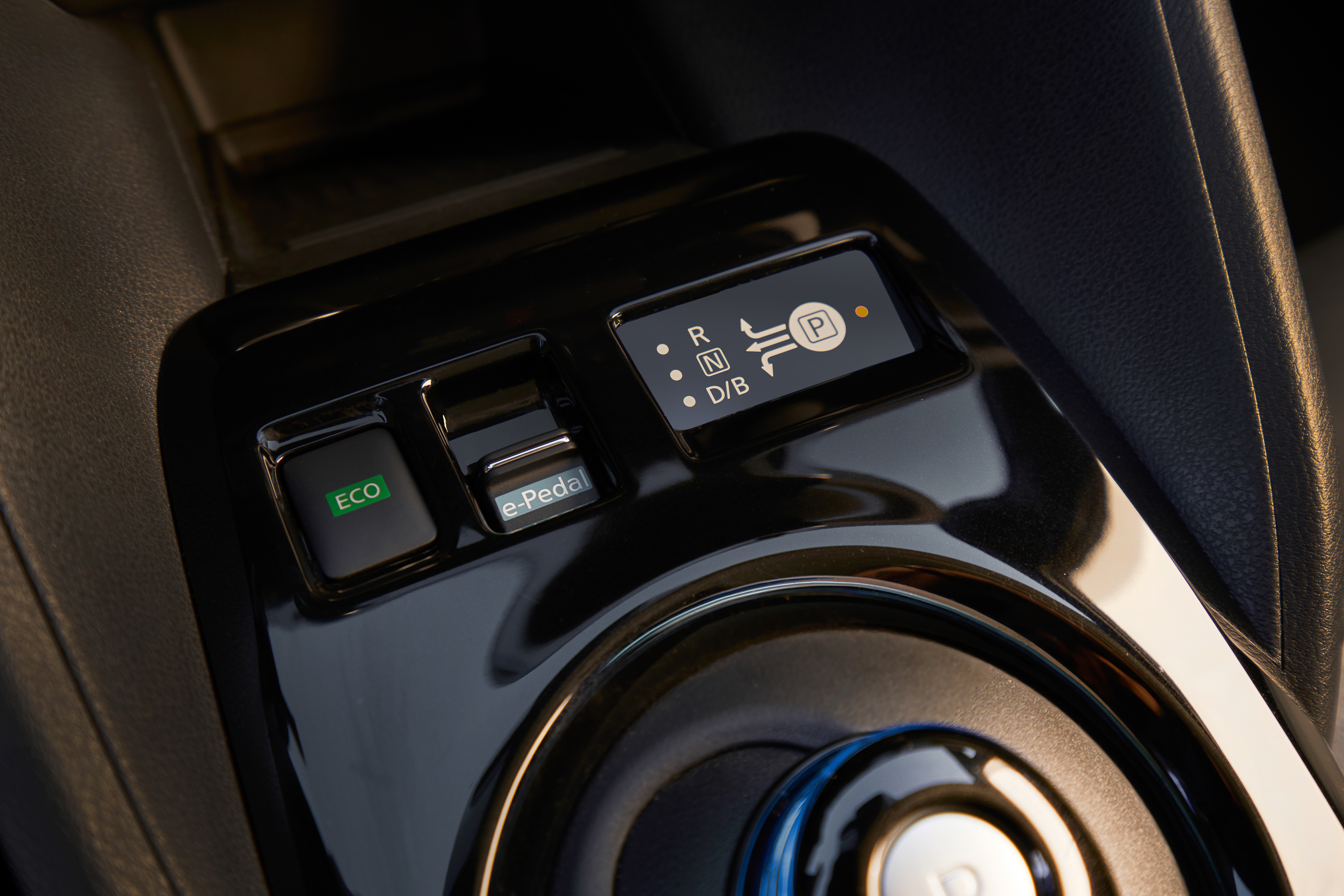
Color design: a lineup that meets customers’ tastes
The new LEAF’s palette of colors offers customers a wide range of options according to their tastes. It is available in eight body colors. The new LEAF is also available in a two-tone White/Black.
Moving to the interior, the clean design ethos extends to the color options. An all-black interior gives an air of cool sophistication, discreetly enhanced by lighter accents on the seats, as well as the blue stitching on the steering wheel, seats and central armrest. The alternative option is a pale shade of gray, which colors the seats, door trims, central portion of the dashboard and central armrest. These surfaces are contrasted with the dark gray accents of the central console, binnacle, lower and upper dashboard sections and steering wheel. The overall effect is a light and airy ambience.
The new LEAF goes on sale Oct. 2 in Japan. It is slated for deliveries in the U.S., Canada and Europe in early 2018. It will be sold in more than 60 markets worldwide.
2018 Nissan LEAF specifications (U.S model)
Specifications are based on the latest product information available at the time of release. Specifications for other regions will be announced at the start of sales.
| Exterior | (inches) |
| Overall length | 176.4 |
| Overall width | 70.5 |
| Overall height | 61.4 |
| Wheelbase | 106.3 |
| Track width front/rear | 60.6/61.2 (S model) |
| Minimum ground clearance | 5.9 |
| Coefficient of drag (Cd) | 0.28 |
| Wheels/Tires
Cargo area (cu. ft.) |
16-in. steel with205/55R-16 or 17-inch aluminum-alloy with 215/50R-17 23.6 |
| Weight/capacity | (lb.) |
| Curb weight | 3,433 – 3,508 |
| Capacity | 5 passenger |
| Gross vehicle weight | 4,453 |
| Battery | |
| Type | Li-ion battery |
| Capacity | 40kWh |
| Electric motor | |
| Name | EM57 |
| Maximum output | 147 hp @ 3283~9795 rpm |
| Maximum torque | 236 lb-ft @ 0~3283 rpm |
| Performance | |
| Cruising range | 150 miles1 |
| Charging time (normal charging) | 16 hours (3kW) 8 hours (6kW) |
| Charging time from alert to 80% (Quick Charging)
|
40 minutes |
1. Projected MY18 EPA range of 150 miles. Actual range may vary based on driving conditions. Use for comparison only.
2. Price is Manufacturer’s Suggested Retail Price (MSRP). MSRP excludes $885 destination charge, tax, title, license and options. Dealer sets actual price.
